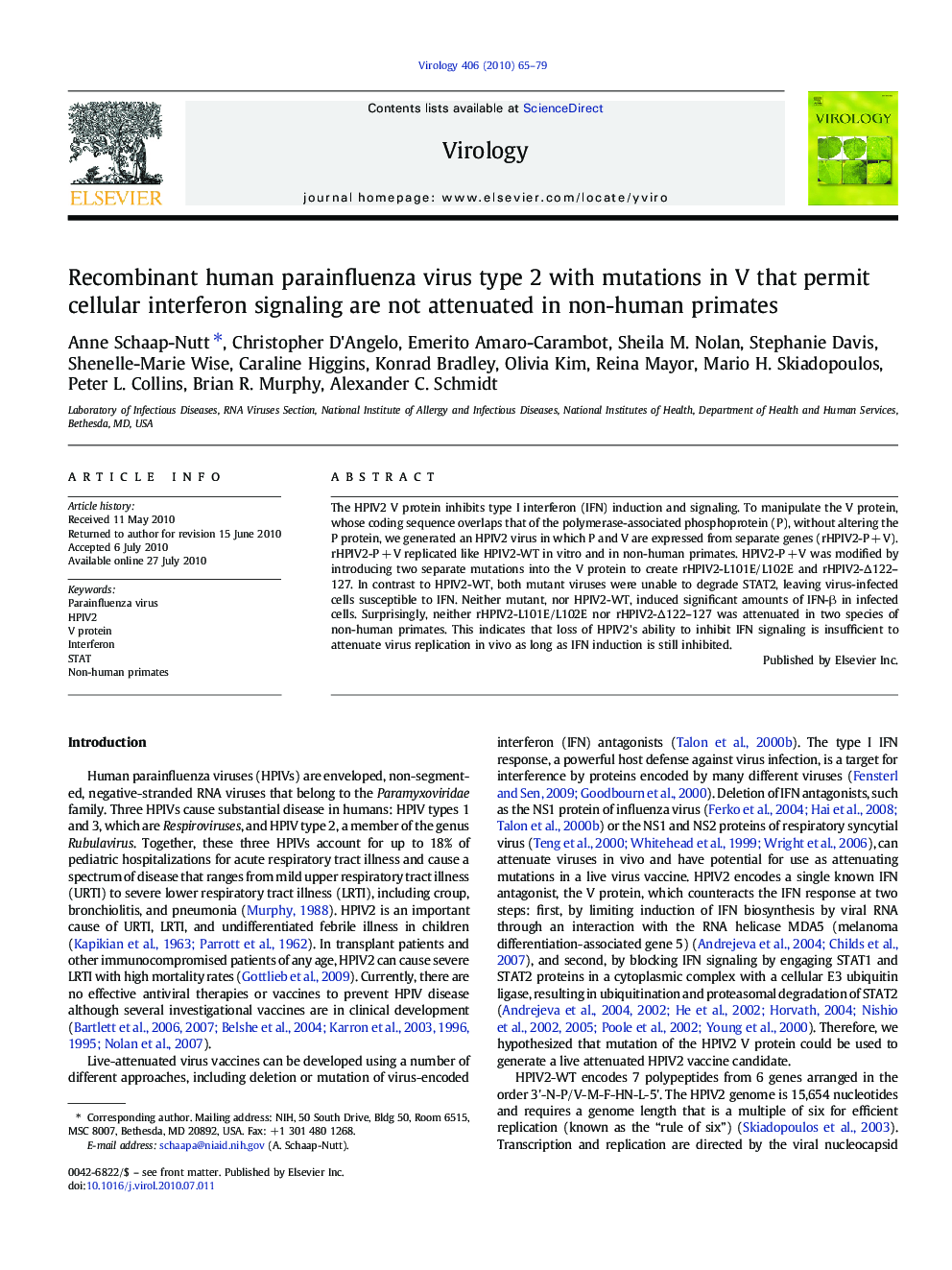| Article ID | Journal | Published Year | Pages | File Type |
|---|---|---|---|---|
| 3425291 | Virology | 2010 | 15 Pages |
The HPIV2 V protein inhibits type I interferon (IFN) induction and signaling. To manipulate the V protein, whose coding sequence overlaps that of the polymerase-associated phosphoprotein (P), without altering the P protein, we generated an HPIV2 virus in which P and V are expressed from separate genes (rHPIV2-P + V). rHPIV2-P + V replicated like HPIV2-WT in vitro and in non-human primates. HPIV2-P + V was modified by introducing two separate mutations into the V protein to create rHPIV2-L101E/L102E and rHPIV2-Δ122–127. In contrast to HPIV2-WT, both mutant viruses were unable to degrade STAT2, leaving virus-infected cells susceptible to IFN. Neither mutant, nor HPIV2-WT, induced significant amounts of IFN-β in infected cells. Surprisingly, neither rHPIV2-L101E/L102E nor rHPIV2-Δ122–127 was attenuated in two species of non-human primates. This indicates that loss of HPIV2's ability to inhibit IFN signaling is insufficient to attenuate virus replication in vivo as long as IFN induction is still inhibited.
